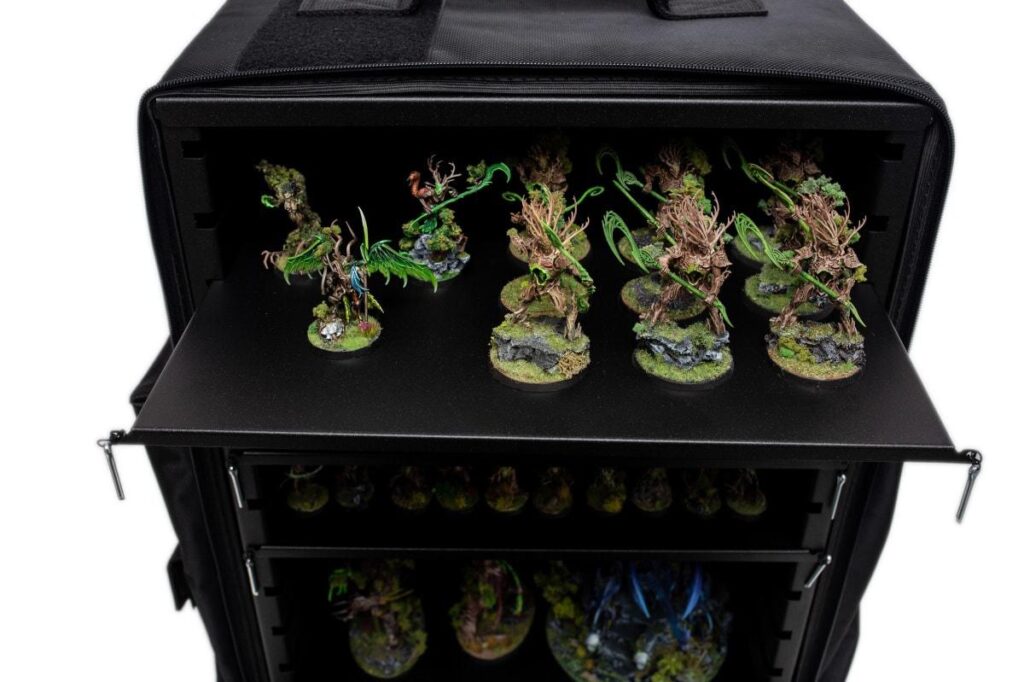
You spent countless hours working on your miniatures and models. Tabletop wargamer? Scale Modeler? Collector? We work hard to express our creativity and bring these characters and worlds to life. Whichever category you might fall under, protecting your miniature investment is a must.
In this article, we share 7 ways to help you protect your painted miniatures and make sure they last for years to come. While not all inclusive, taking these tips into account will help you keep your investment safe and sound!
Read on for more details about how to protect your hard work, creativity, and investment.
All painted miniatures should start with a good surface primer. A primer helps to provide a better surface texture and adhesion for your paints. For miniatures constructed of plastic, resin, or metal, a good hobby primer lays the foundation for overlying paint colors. Primers such as Vallejo surface primer fill-in microscopic gaps and holes on a miniature, reduces porosity (i.e., decreases water intrusion) of the model’s surface, and helps overlying paint stick.
In the latter, a good primer application will prevent paint chipping, peeling, and other avoidable painting pitfalls. For best results apply 1-3 layers of primer until your entire model’s surface is covered in a very thin layer of the foundation primer coat. Choose a primer that is specifically designed for miniatures—avoid using spray paints from DIY stores as these may contain chemicals that can damage plastic or metal models.

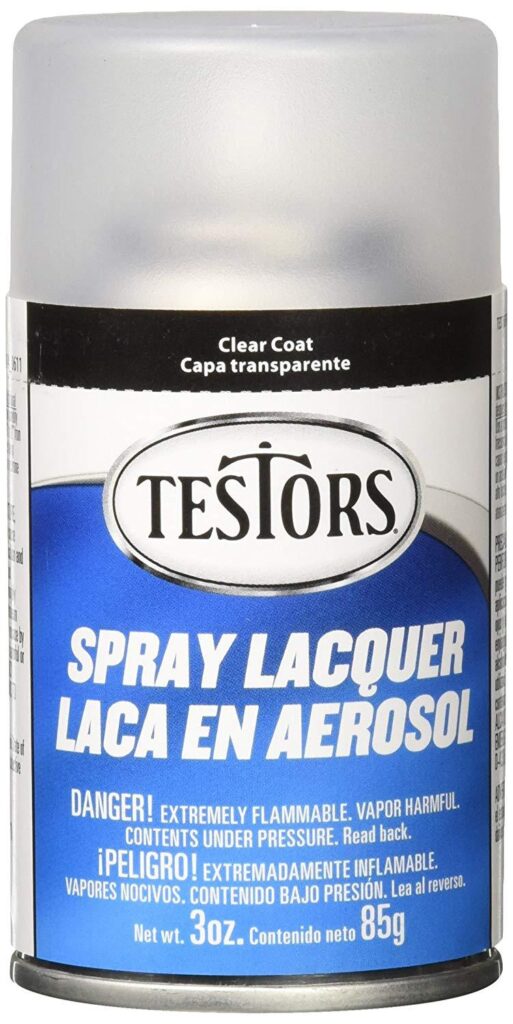
Similar to a good primer coat, a varnish is the final step in protecting your model after your paint job. A varnish acts like an invisible shield that will protect your paint job from dust, dirt, fingerprints, and other environmental damage. Many varnishes come in matt (non-shiny) or gloss (shiny) finish to suit any desired look. Applying a couple layers of varnish also helps to preserve your model’s colors over time.
There is no trick to applying a varnish except to make sure you use very thin layers. If you spray your varnish, make sure you do so in an environment with low humidity and with an ambient temperature as close to room temperature as possible (~25C or 72F). This will help prevent frosting, air bubbles, or other nasty artifacts from appearing over your paint job.
Painting miniatures is like any other activity where your tools make all the difference. Quality paints are key not just from a color perspective, but also from a durability and protection standpoint. You can get away with using “craft” or other “budget” paints. However, these often come with questionable
Quality acrylic hobby paints, such as Vallejo, The Army Painter, or Citadel paints (from Games Workshop), are formulated with durability in mind. These acrylics when dry form a flexible, yet strong surface that will stand up to the rigors of tabletop play. For more delicate pieces, there are special mini paints that have a thinner consistency and higher pigment concentration for greater coverage with fewer coats.
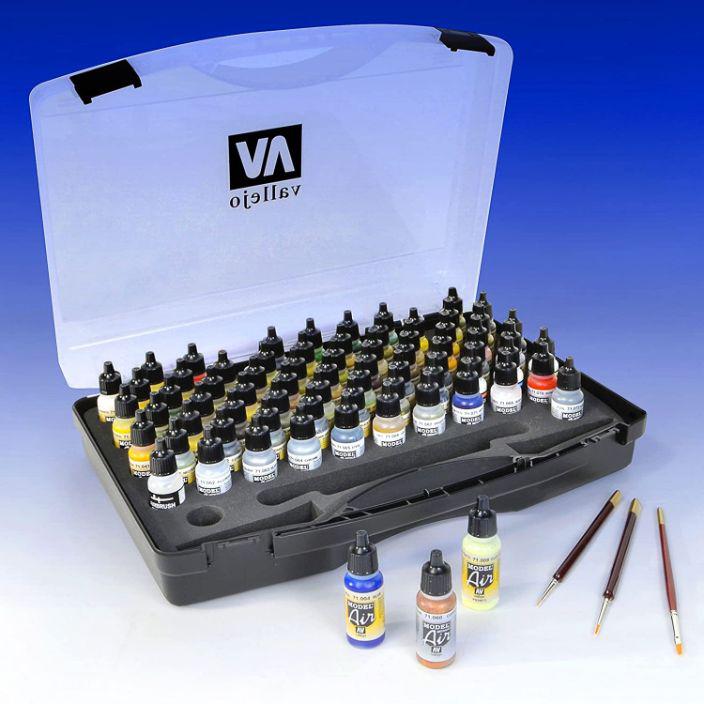
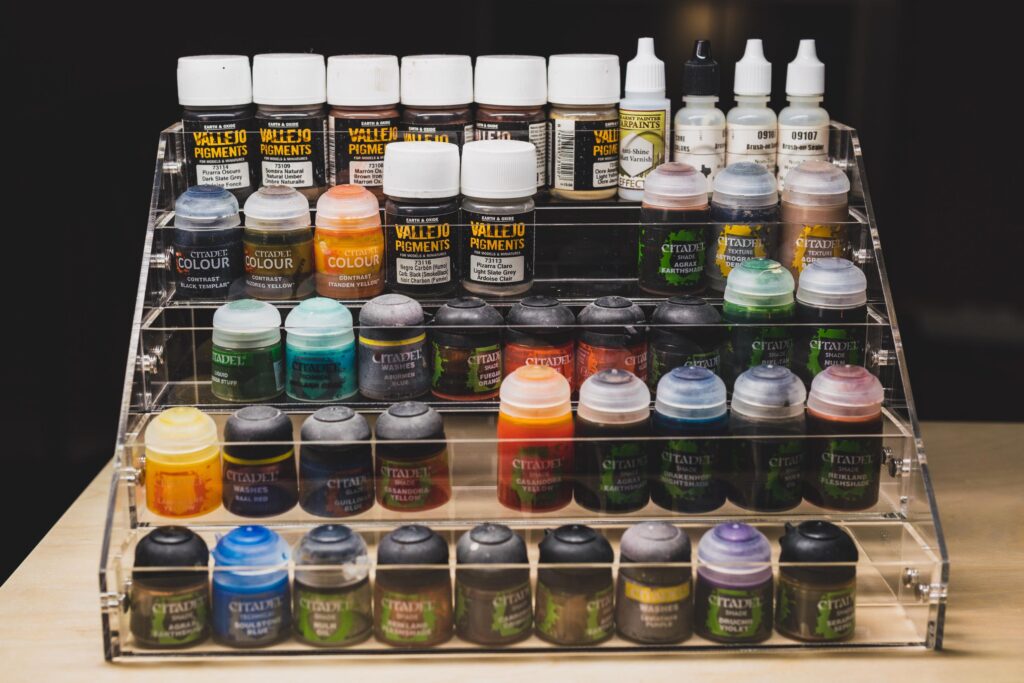
Do you know what happens when you touch wet paint? You get your fingerprints all over it and ruin your masterpiece. Avoid this by investing in a good miniature handle that allows you to hold and paint on your models with great detail and precision.
The https://shop.army-case.com/wp-content/uploads/2018/01/brush-case-1.jpg Painting Handle for Miniatures is a great choice due to its unique features. This 3D printed magnetic painting grip provides a comfortable grip and allows you to easily manipulate the miniature while painting. With its adjustable height and magnetic system, you can customize the handle to your needs and reach difficult areas that would otherwise be difficult or impossible to access. The ergonomic design also makes it comfortable for long painting sessions.
Ultimately, using a painting handle to hold your models while you work on them will ensure that you have the best painting experience possible, with fewer mistakes and reduce the risk for damaging your works in progress.
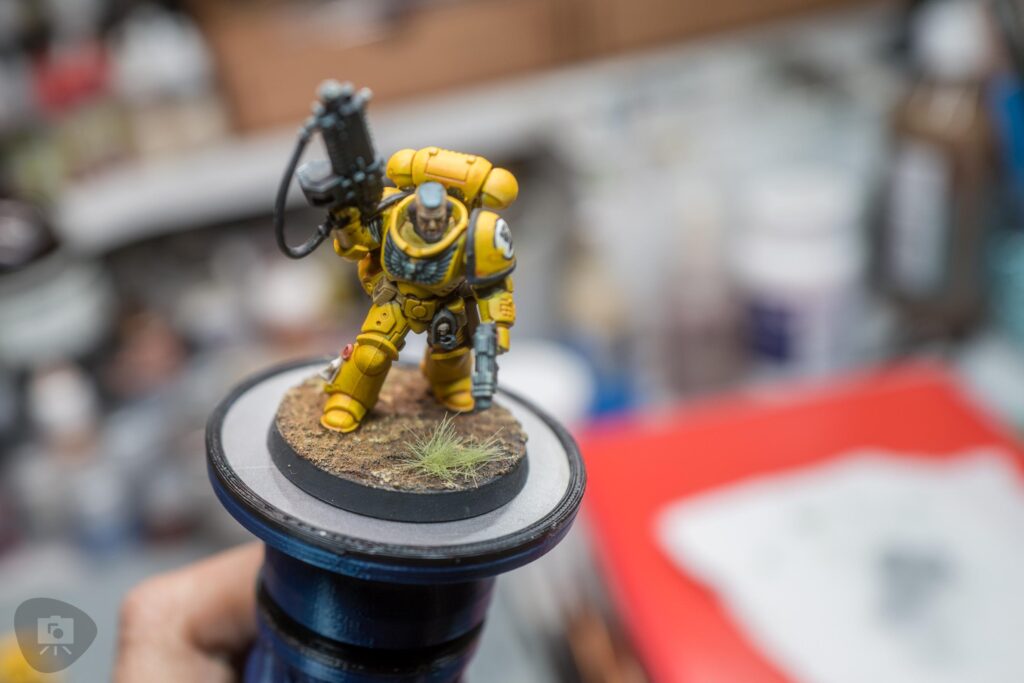
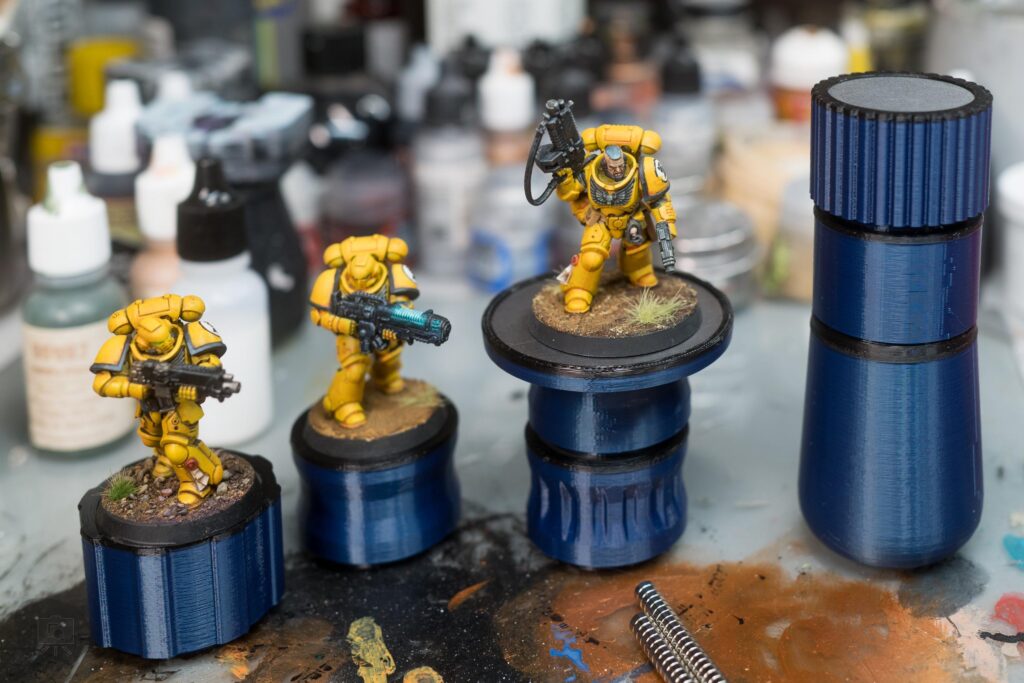
The most common way your painted models may get damaged is when you’re traveling with them in a poorly constructed case or bag. Metal or plastic miniatures will scratch each other, ding up the corners, or rub away details and paint if they are not safely tucked away.
For maximum protection, choose a travel case specifically designed to store miniatures. For added protection, consider the https://shop.army-case.com/wp-content/uploads/2018/01/brush-case-1.jpg Magnetic Army Transport.
It is the perfect solution for protecting your painted miniatures. The lightweight, premium materials used in the construction of the case make it strong and durable, while the steel shelves allow you to use magnets attached to the bases of minis to keep your models secure during transport.
The magnetic feature also helps keep your miniatures from shifting around or getting damaged while in transit. With its unique design and features, the https://shop.army-case.com/wp-content/uploads/2018/01/brush-case-1.jpg Magnetic Army Transport case is an ideal way to protect your precious painted miniatures.
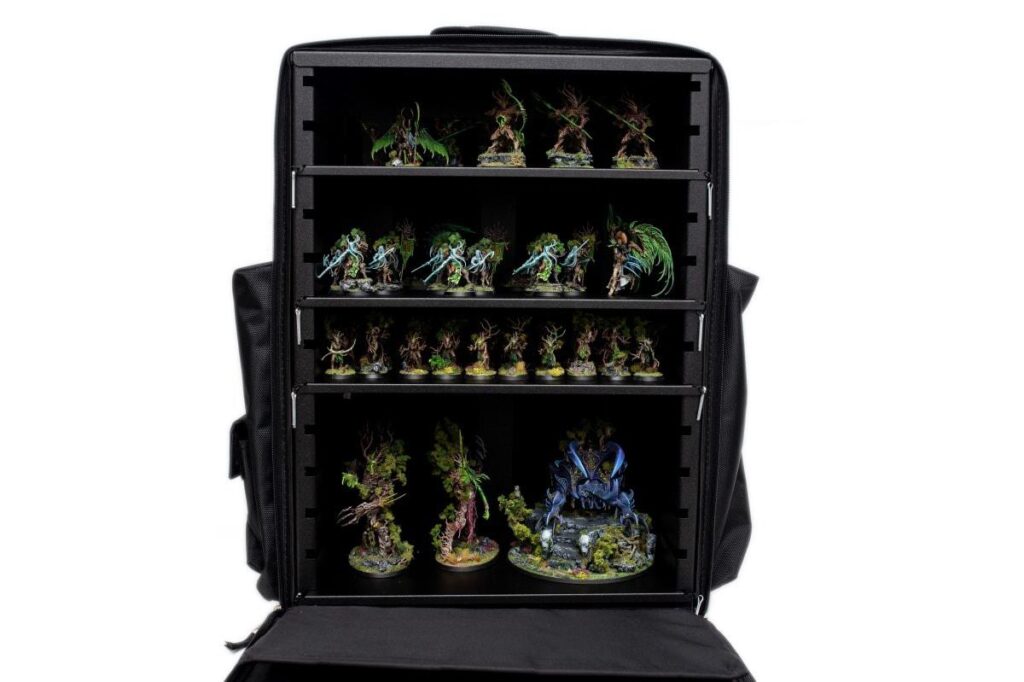

If you use quality acrylics to paint miniatures, then you probably won’t need to worry about fading colors. High quality hobby paints are colorfast, which means that the colors won’t fade or bleed when exposed to sunlight.
However, it is still best practice to avoid too much exposure to direct sunlight because of the heat and UV radiation. The heat itself may warp the underlying miniature plastic or resin, which then leads to paint peeling or chipping.
Did you know that the standard polystyrene kits generally melt at around 100°C (212°F) (source)? Resin warps at even lower temperatures. In other words, there’s more danger from exposing those expensive Forgeworld models to excessive heat. Don’t leave your painted models in a car in hot weather on a sunny day!
In general, even with quality paints, you should still take special precautions to keep your models away from any direct sunlight or heat source. Ultimately, the best way to protect your painted miniatures from excessive exposure is to store them in a cool and dark place that has minimal temperature fluctuations.
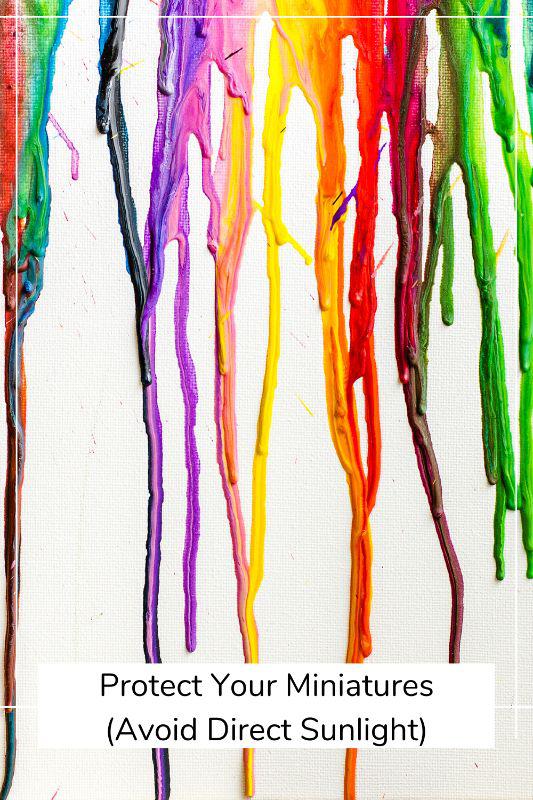
High humidity or even an accidentally splash of water on your painted models may be okay if you have properly sealed them with a clear coat varnish (see above). However, it is clear that dried acrylic paint on your models can get damaged when directly exposed when wet.
How do we know? Well, when you want to strip the paint off of miniatures, one of the most effective solvents is a surfactant, e.g., soapy chemical, mixed with water. When you submerge a painted model in a water-based solution paint will peal, warp, and flake off the original surface.
Therefore, if you’re trying to protect your painted miniatures from potential water damage, you should make sure to practice proper painting techniques and use a clear sealer after you’re done. When storing your models, be sure to keep them away from any areas of very high humidity or direct water exposure.
So, there you have it: 7 ways for how to protect your painted miniatures. With these tips, your painted models (and hard work) should last for many years to come. So, no matter how you plan on transporting them or where they are stored – keep your miniatures safe and secure!
Good luck, and happy painting! 😀
Did you find this article helpful? Let us know in the comments below – we’d love to hear from you! 🙂